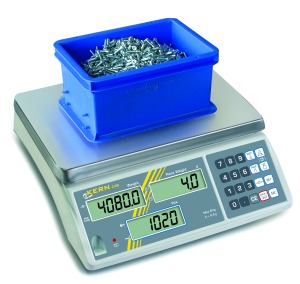How to Judge Precision Weighing Scale Accuracy
At Tovatech we frequently find that customers are confused about weighing terms associated with analytical scales and precision balances, especially as it relates to scale accuracy. This comes as no surprise to us because, in fact, the terminology is confusing. Different manufacturers of analytical balances will use different weighing terms to describe the performance and accuracy of their products. When you evaluate precision scales you should compare the performance of a specific manufacturer’s products against each other. Do not try to compare those of different manufacturers.

Why Weighing Terms are Important for Precision Weighing Scale Accuracy
The importance of scale accuracy applies to many weighing operations across the weighing spectrum from moisture analyzers to counting scales. Different applications have different requirements. For example, a small degree of inaccuracy may be tolerated when weighing out a quantity of bolts, but that is not the case when researchers calculate active pharmaceutical ingredients and pharmaceutical excipients going into a medicine. Any inaccuracy in the latter example puts the user at risk of running afoul of the FDA and other regulatory authorities.
The Difference Between Accuracy and Precision
Many users think accuracy and precision mean the same thing, but that is not the case. An accurate scale is right if it is showing the correct weight and is further assured when the scale is calibrated. Precision means the result is always the same. Unfortunately, a scale with excellent precision could also be wrong and, therefore, inaccurate.
Key Weighing Terms Used to Describe Precision Weighing Scale Accuracy and Precision
Linearity
The positive or negative deviation of the readout from the actual load of a calibrated analytical balance throughout its weighing range. For example, using rubber-tipped tweezers place a 10-gram test weight on the balance and allow it to stabilize. The scale should show 10 grams. Next a 20-gram test weight is placed on the balance and the scale should now read 20 grams. Finally, place them both test weights on the balance and that should display 30 grams. The numbers may not be perfect. High-end analytical balances generally have a linearity of ±0.2 or ±0.3 mg.
Readout (or Readability)
For precision weighing scales and analytical balances this shows smallest difference in weight that can be read and displayed by the unit. The readout for an analytical balance is typically 0.1 milligram.
Repeatability
This is the ability of an analytical balance to display the same result when an object is repeatedly placed on the weighing pan and removed. Each weight can differ slightly when dealing in small measurements, like milligrams. The difference between the largest and smallest result is used to specify repeatability.
Some key take aways are as follows:
- If the readability of a balance is identical to the repeatability, repeated sequential weighing of the identical item should display exactly the same results.
- Select your weighing resolution. If you need to know the weight of a sample within 0.1 mg accuracy, an analytical balance with 0.1 mg readout and 0.3 mg linearity will not be adequate. In such a case the balance would need a linearity of at least 0.1 mg. This means you need a balance with the 0.01 mg readability available on a semi-micro balance.
Reproducibility
Frequently confused with repeatability but it signifies something different. Examples of reproducibility are:
- Will a technician at the West Coast lab get the same result as one at the East Coast lab using the same make and model of analytical scale and following the same procedure?
- If in the same lab will the results be the same if done by different people at different times but on the same scale?
Additional Weighing Terms
Calibration
A subject onto itself. Please refer to our blog post on internal and external calibration.
IP (Ingress Protection)
IP is the ability of certain industrial scales to withstand the ingress of dirt and moisture that would affect performance. IP is usually presented as two numbers, the first for protection against solid objects (0 to 6) and the second (0 to 8) against liquids. Higher is better.
Stabilization Time (or Response Time)
The time it takes, usually about 2 seconds, for a scale to display the weight of products placed on the weighing platform of, for example, a counting scale. You can slowly add or remove bolts to get the desired quantity but you have to wait for the weight to stabilize before taking the reading.
Taring
Eliminating the weight of the bolt bin to get an accurate bolt count or weight. Most digital scales have a tare button to accomplish this.
Validation
A documented act of demonstrating that a procedure, process, and activity will consistently lead to the expected results. It often includes the qualification of systems and equipment (such as scale validation) and is a requirement for good manufacturing practices and other regulatory requirements.
Questions? Call or Chat with Tovatech for Answers
We hope this overview is helpful to ensure your precision weighing scale accuracy. We at Tovatech welcome your inquiry and will be delighted to help you select weighing instruments of any type for you particular operations.
